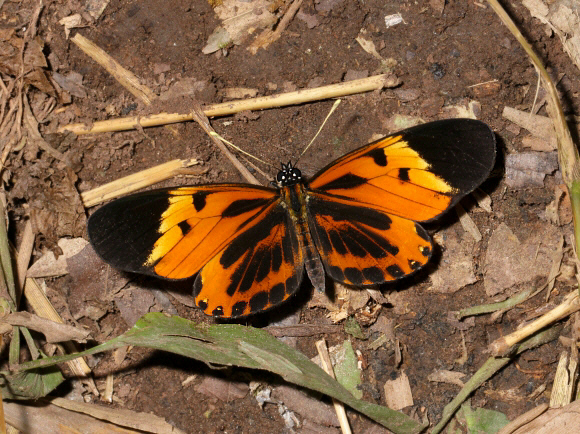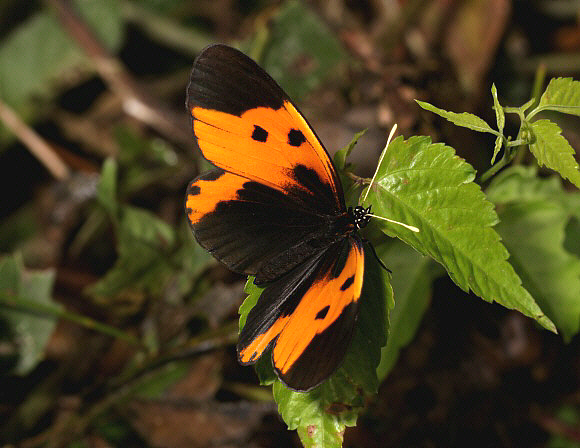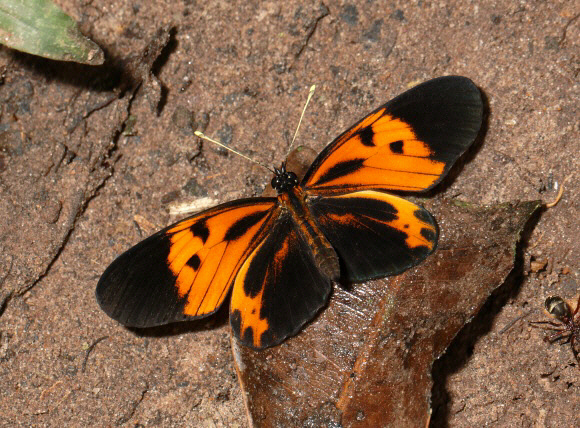
Introduction
The tribe Melitaeini is of worldwide distribution. It includes the Crescents and Checkerspots of North America, and also many familiar European species such as the Marsh, Spotted and Heath Fritillaries.
Eresia are closely related to Castalia, Anthanassa and Janatella, in fact that these genera can only be distinguished by microscopic examination of the male genitalia.
The 20 Eresia species fall into 2 distinct groups. Some e.g. nauplius are black with bands or patches of white. Most however are strongly marked in black and orange, and regarded as Batesian mimics of toxic Ithomiinae. Eresia pelonia e.g. produces several forms, each of which strongly resembles a particular species of Ithomiine. Eresia pelonia callonia is for instance an extremely accurate “copy” of Hypothyris mansuetus meterus which flies in the same area of Peru. The form illustrated above is intermediate between E. p. pelonia and E. p. apicalis, and is a mimic of another sympatric Ithomiine – Callithomia alexirrhoe thornax.
Despite the similarities in colour and pattern the various forms of pelonia can easily be distinguished from their Ithomiine models by their antennae – these are long and drooping in Ithomiines, but short and straight in Eresia. They also behave very differently – Ithomiines have a slow floppy flight with deep wing beats, and nearly always settle with wings closed. Eresia however have an erratic jerky flight, and usually settle and bask with wings fully outspread.
Eresia pelonia is found in Ecuador, Peru and in Rondonia state, Brazil.

Habitats
This species is found in primary rainforest at altitudes between about 200-800m, occupying forest edge habitats including river banks, small clearings, light gaps and glades.
Lifecycle
I have no data regarding pelonia but the lifecycle is probably similar to that of ithomioides, in which the eggs are cream coloured, pear-shaped, and laid in batches of up to 70 beneath leaves of Pilea ( Urticaceae ). At least one other Eresia species – coena, oviposits on Justicia ( Acanthaceae ). The larva of ithomioides is dark green with orange spikes and white dots along the back. The head and legs are orange. Its pupa is olive-brown, shiny, and suspended by the cremaster from stems.
Adult behaviour
The butterfly is usually seen in small glades and light gaps, where it settles with wings outspread, to imbibe mineralised moisture from damp soil or logs.

